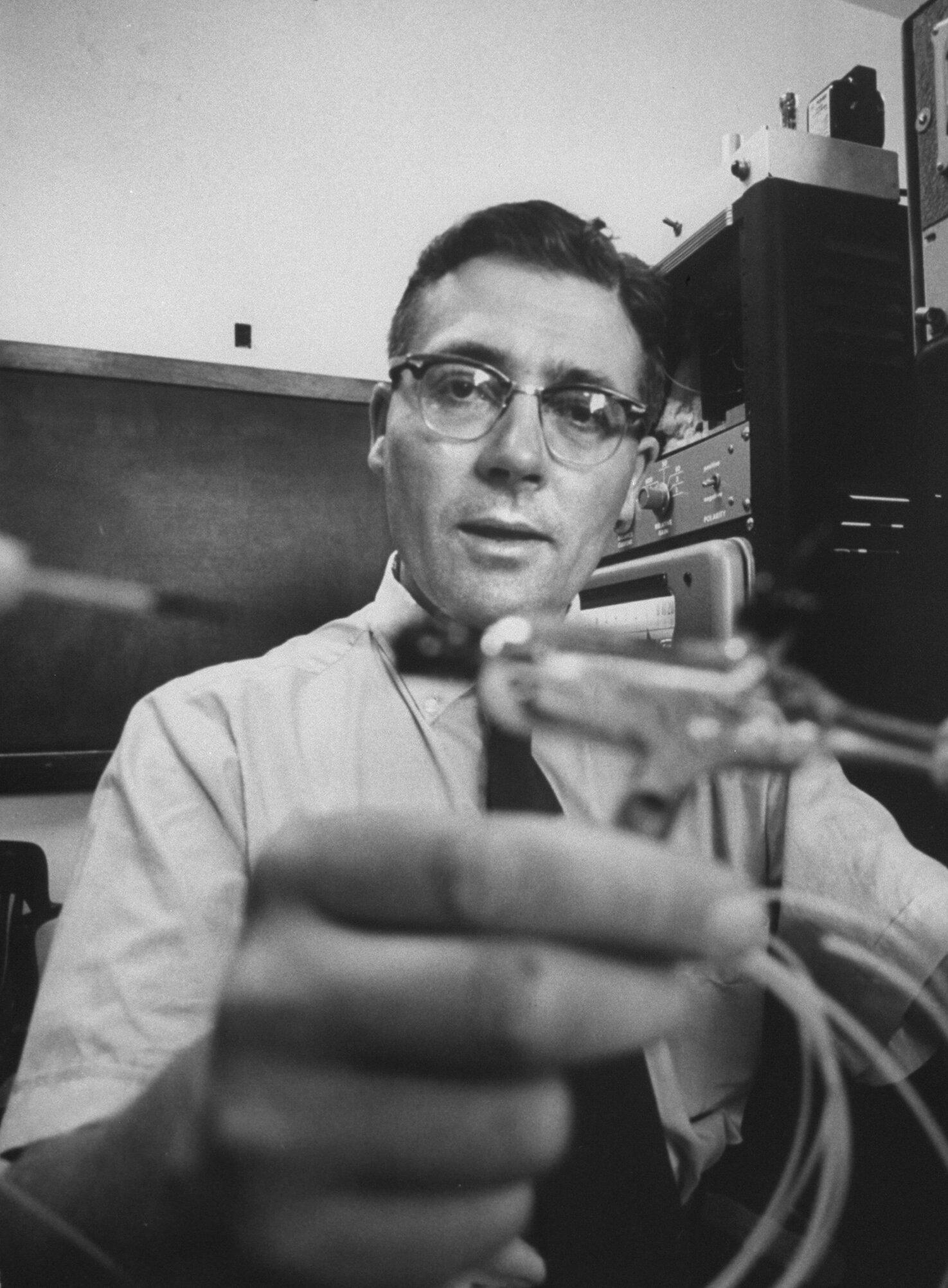Table of Contents
- Exploring the Early Life of James Lovelock and His Influences
- The Gaia Hypothesis: Understanding Lovelocks Groundbreaking Theory
- Innovative Inventions by Lovelock That Changed Environmental Science
- James Lovelocks Views on Climate Change and the Future of Earth
- Legacy and Recognition: How Lovelock Shaped Ecological Thinking
- Q&A
- To Conclude

Exploring the Early Life of James Lovelock and His Influences
James Lovelock, born in 1919 in the coastal town of Letchworth, Hertfordshire, had an upbringing that would profoundly shape his scientific inquiries and environmental philosophy. Growing up during the Great Depression, he was immersed in a humble environment that fostered a keen sense of curiosity. His early fascination with nature was fueled by countless hours spent exploring the nearby fields and woodlands, where he developed a deep appreciation for the intricate balance of ecosystems. This environment laid the groundwork for his future explorations as a scientist and innovator.
One of the most significant influences on Lovelock’s life was his education, particularly at the University of Manchester, where he studied chemistry. Here, he was introduced to the scientific method and critical thinking, which catalyzed his passion for environmental science. Lovelock’s diverse interests, ranging from biology to physics, further enriched his understanding of the interconnectedness of life on Earth. His experiences during World War II, working in medical research, also played a crucial role in shaping his commitment to the scientific community and the pragmatic application of technology in solving global challenges.
As a pioneer of the Gaia hypothesis, Lovelock drew inspiration from a variety of sources, including his mentors and contemporaries. He emphasized the importance of interdisciplinary approaches to science, particularly how geology, ecology, and atmospheric science intersect. Lovelock’s innovative spirit thrived in the rich intellectual climate of the 1960s, a time of significant social and environmental awakening. His early life experiences and the eclectic mix of influences he encountered would ultimately propel him onto the global stage, where he became a leading voice in advocating for environmental stewardship and sustainability.
The Gaia Hypothesis: Understanding Lovelocks Groundbreaking Theory
The Gaia Hypothesis presents a fascinating perspective on Earth as a self-regulating, complex entity. Proposed by James Lovelock in the 1970s, it suggests that the intricate interactions between living organisms and their environment function to maintain conditions conducive to life. This theory has challenged traditional views of biology and ecology, prompting us to consider the Earth itself as an integrated system where living beings play a crucial role in shaping the planet’s environment. Lovelock’s ideas urge us to look beyond individual species and examine how life itself contributes to the stability of atmospheric and oceanic conditions.
At the core of Lovelock’s proposal is the understanding that various biological and physical processes work together to sustain life. For example, photosynthesis by plants helps regulate atmospheric carbon dioxide levels, while oceans absorb excess heat. These interdependent systems create a feedback loop critical for maintaining equilibrium on Earth. Additionally, Lovelock emphasizes that even seemingly insignificant organisms, like bacteria, play essential roles in overall ecosystem health. Such insights illustrate the profound interconnectedness within nature and the need for a holistic approach to ecological issues.
Over the years, the Gaia Hypothesis has sparked discussions and research across multiple disciplines, from environmental science to philosophy. Although it has faced criticism, many scientists now recognize its value as a framework for understanding ecological balance. Lovelock’s work has inspired a variety of projects aimed at sustainable living and environmental protection, echoing the need for responsible stewardship of our planet. As we confront pressing challenges like climate change, the principles inherent in this hypothesis become increasingly relevant, reminding us of the intricate dance between life and the environment we inhabit.

Innovative Inventions by Lovelock That Changed Environmental Science
James Lovelock, the visionary scientist and environmentalist, has made groundbreaking contributions that have significantly impacted the field of environmental science. One of his most notable inventions is the Gaia Theory, which proposes that the Earth functions as a single, self-regulating system. This concept revolutionized how scientists and the public perceive the relationship between living organisms and their inorganic surroundings, emphasizing the interconnectedness of life and the planetary ecosystem.
Lovelock’s invention of the electron capture detector (ECD) was another pivotal advancement that changed environmental monitoring. This sensitive instrument allowed scientists to detect trace amounts of pollutants in the air and water, paving the way for a better understanding of environmental contaminants and their effects on health and ecosystems. The ECD’s ability to identify harmful substances at incredibly low levels was instrumental in uncovering the extent of pollution in various ecosystems.
In addition to these inventions, Lovelock has also been a strong proponent of climate engineering as a means to combat global warming. He has suggested innovative solutions such as “climate control” techniques, which involve large-scale interventions to influence the Earth’s climate directly. His ideas challenge traditional approaches and advocate for a new way of thinking about climate change, urging humanity to consider creative, albeit controversial, methods to ensure the planet’s longevity.

James Lovelocks Views on Climate Change and the Future of Earth
James Lovelock, the renowned scientist and environmentalist, has long been an advocate for recognizing the profound challenges posed by climate change. His perspective is deeply intertwined with the Gaia theory, which he formulated, suggesting that Earth functions as a self-regulating system. This theory emphasizes the interdependence of living organisms and their environment, a notion that underpins his views on the urgent need for humanity to shift its relationship with nature. Lovelock’s insights are particularly critical in understanding that our actions are irrevocably altering the planet’s climate and ecosystems.
One of Lovelock’s most striking predictions is that the current climate crisis requires an immediate and transformative response. He posits that the future of Earth hinges on adopting sustainable practices that respect the planet’s natural processes. His warnings about rising temperatures, melting polar ice, and extreme weather events serve as a clarion call for global cooperation. Lovelock believes that while technology can aid in combating climate change, our approach must also incorporate a deeper appreciation for the delicate balance of our ecosystems.
In his later works, Lovelock has expressed skepticism about the ability of current climate policies to make a significant impact, arguing instead for a radical rethinking of our ecological footprint. He emphasizes the importance of adaptation and resilience, advocating for communities to prepare for the changes that are already underway. Key points of his philosophy include:
- Acceptance of change: Recognizing that some changes are inevitable and may require new ways of living.
- Emphasis on local solutions: Prioritizing localized responses to environmental challenges.
- Integration of science and ethics: Balancing technological advancement with moral obligations to future generations.

Legacy and Recognition: How Lovelock Shaped Ecological Thinking
James Lovelock’s profound impact on ecological thinking is evident in both his innovative theories and the lasting legacy he has left on environmental science. As the mind behind the *Gaia Hypothesis*, Lovelock proposed that the Earth operates as a self-regulating system, where living organisms and their inorganic surroundings interact in a complex, interdependent relationship. This groundbreaking concept challenged conventional views and inspired a new way of understanding the planet’s ecosystems, promoting the idea that humans are integral to Earth’s biosphere, rather than separate entities.
His work has sparked *significant conversations* around environmental responsibility and sustainability. Lovelock emphasized the importance of acknowledging human impact on natural systems, which has resonated in various fields, from environmental policy to conservation efforts. With his writings and studies, he encouraged a paradigm shift in how society perceives ecological balance, urging a collective responsibility towards protecting our planet. This shift has galvanized movements focused on climate action and sustainable living, showing the influence of his visionary thoughts.
A notable aspect of Lovelock’s recognition includes numerous awards and accolades that highlight his role in promoting ecological awareness. Among these, he has been honored with recognitions such as:
| Award | Year | Description |
|---|---|---|
| UNESCO’s Kalinga Prize | 1987 | For the popularization of science. |
| The Goldman Environmental Prize | 1990 | Recognizing grassroots environmental heroes. |
| Honorary Degrees | Multiple | Acknowledging contributions to science and ecology. |
Through these honors, Lovelock’s contributions to ecological thinking not only shaped scientific discourse but also inspired future generations of environmental advocates and scientists to continue exploring the intricate relationship between humanity and nature.
Q&A
Q&A: Fun Facts About James Lovelock
Q1: Who is James Lovelock?A1: James Lovelock is an influential British scientist, environmentalist, and inventor best known for proposing the Gaia Theory. This groundbreaking concept suggests that Earth functions as a single, self-regulating system where living organisms interact harmoniously with their inorganic surroundings.Q2: What is the Gaia Theory?A2: The Gaia Theory, formulated by Lovelock in the 1970s, posits that the Earth’s biosphere and the physical environment are interconnected. He argues that life on our planet actively works to maintain conditions conducive to life, creating a balance that regulates the atmosphere, oceans, and climate.
Q3: What are some of Lovelock’s notable inventions?A3: Beyond his contributions to environmental science, Lovelock invented the electron capture detector (ECD) in the 1950s. This device was pivotal for detecting trace amounts of pollutants in the atmosphere, aiding in the study of climate change and the impact of human activities on the environment.
Q4: Did James Lovelock have any formal academic training?A4: Lovelock studied at the University of Manchester, where he earned a degree in chemistry. He later completed his postgraduate work at the University of London. Despite this formal education, much of his work stemmed from his unique perspectives and experiences, allowing him to traverse multiple disciplines.
Q5: What role did Lovelock play in the field of climate change?A5: Lovelock has been a critical voice in climate change discussions. His research and writings, particularly through the lens of the Gaia Theory, emphasize the interconnectedness of life and the environment. He has warned about the dangers of human-induced climate change and advocated for sustainable practices.
Q6: How did Lovelock’s work influence environmental movements?A6: Lovelock’s ideas inspired the modern environmental movement by introducing a holistic view of Earth as a living entity. His work has influenced activists, scientists, and policy-makers, fostering a greater understanding of human impact on the planet and the necessity for environmental stewardship.
Q7: What is Lovelock’s stance on technology and climate solutions?A7: Interestingly, Lovelock has a nuanced view regarding technology’s role in combating climate change. While he acknowledges the urgency of the crisis, he also believes that advanced technologies, such as geoengineering, could offer potential solutions if paired thoughtfully with environmental conservation.
Q8: What are some lesser-known facts about James Lovelock?A8: Beyond his scientific acclaim, Lovelock has a background in music and art, having dabbled in painting. At the age of 92, he continues to engage in public discussions, demonstrating his lifelong passion for knowledge and environmental advocacy. Additionally, he is a self-proclaimed “scientific heretic,” often challenging conventional wisdom in pursuit of truth.
Q9: What legacy is Lovelock leaving behind?A9: Lovelock’s legacy is multifaceted—he reshaped our understanding of Earth systems, inspired generations of environmentalists, and challenged humanity to rethink its relationship with nature. His contributions not only paved the way for modern ecological science but also instilled a sense of responsibility towards our planet.



0 Comments